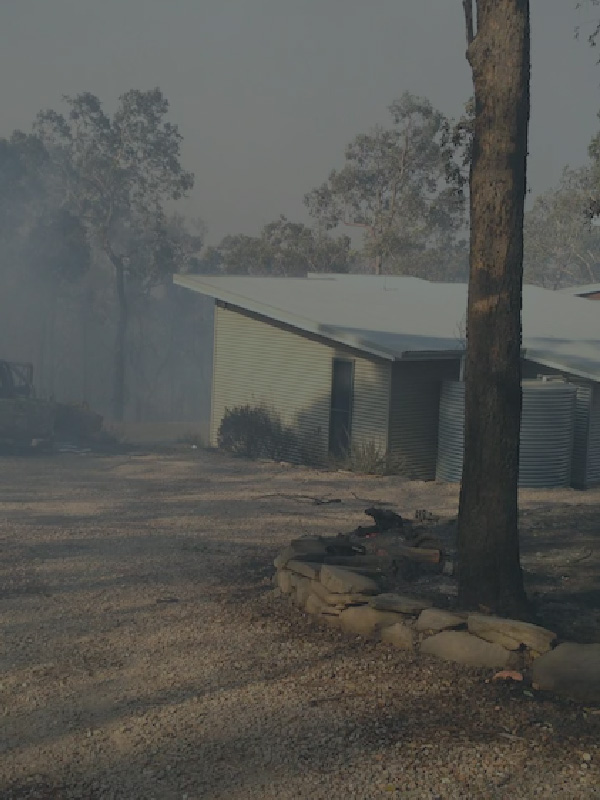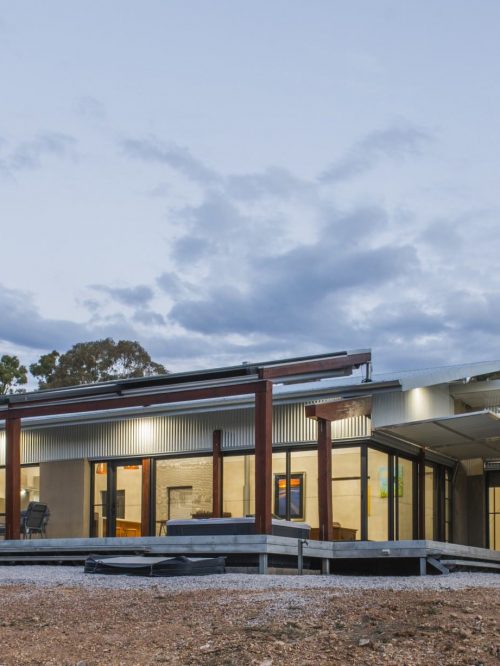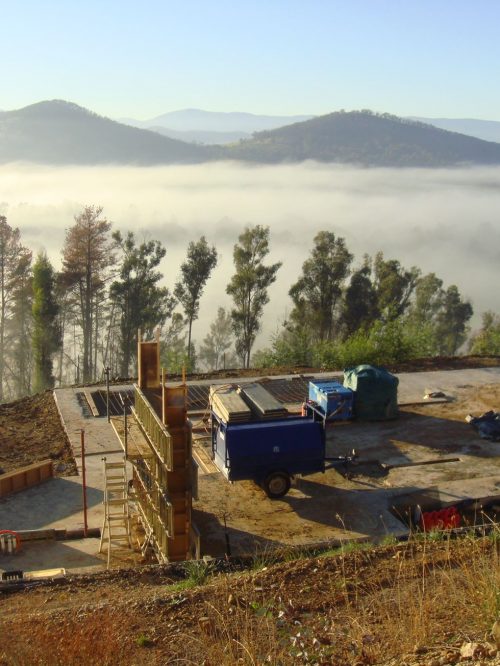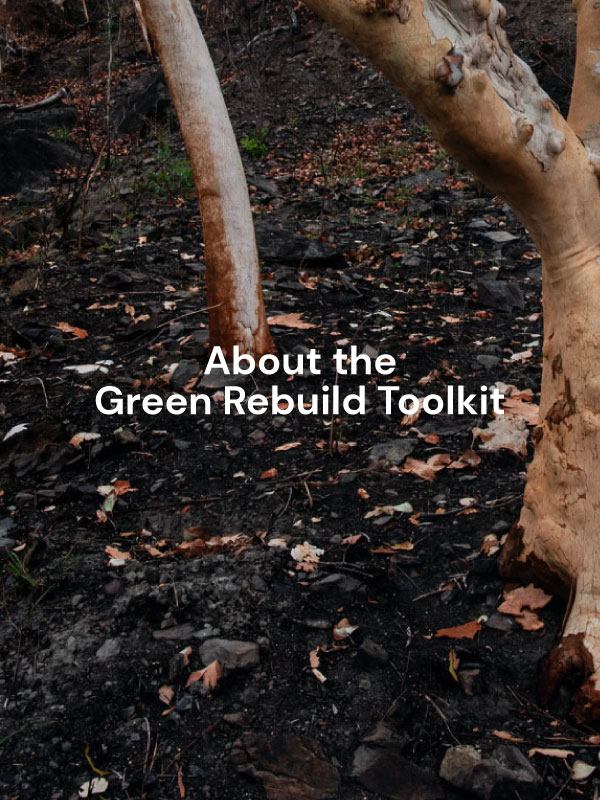Standards and ratings apply when building a new home in a bushfire prone area. These will be expanded upon throughout the toolkit, but you can find an introduction below.
Keep in mind that houses built to high bushfire resilience standards are generally energy efficient as well, as acknowledged in the Queensland Government/CSIRO Bushfire Resilient Building Guidance for Queensland Homes. By necessity, a bushfire resilient home has fewer gaps and openings and better insulating properties, resulting in a home that requires less energy to heat and cool. Bushfire resilient homes also tend to be better built, meaning lower maintenance costs compared to traditional buildings. These economic and environmental benefits are magnified when considering future predicted climate changes.5
Dick Clarke explains the many ways that bushfire resistance and thermal efficiency align through high levels of insulation, draught sealing and window choice in his article Designing a house for bushfire resistance and performance.
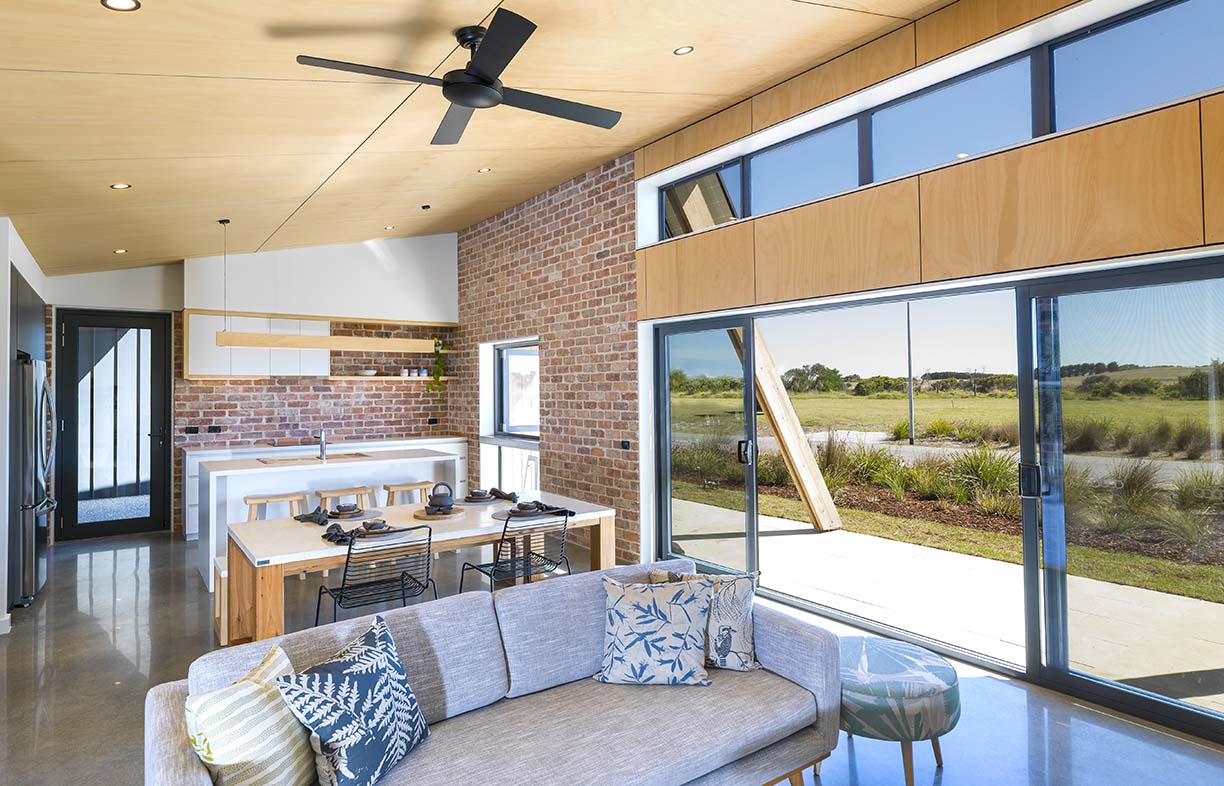
Beaumont Concepts’ award winning C0RE 9 house at The Cape development in Cape Paterson, Victoria.
Australian Standard AS 3959 Construction of buildings in bushfire-prone areas
New homes need to adhere to the Australian Standard AS 3959 Construction of buildings in bushfire-prone areas, which covers the bushfire safety requirements of building in areas at risk of bushfire, as well as the methodology for calculating your site’s Bushfire Attack Level (BAL). The standard specifies requirements for the construction of buildings to improve their resistance to bushfire attack from burning embers, radiant heat, flame contact and combinations of the three attack forms.
The standard was developed by a committee that represents regulators, emergency services and some of the leading experts in the area, and is referenced in the National Construction Code (NCC) as a Deemed-To-Satisfy Solution. The standard includes materials, components, design factors, and construction methods that, if used, are deemed to meet the Performance Requirements of the NCC1, which are minimum standards for the design and construction of new buildings on bushfire-prone land.
It’s important to note that the NCC is performance-based. “It doesn’t specify how a building must be built, but how a building must perform. This means innovative designs, materials and construction methods can be readily approved,” says Adjunct Professor Raymond William Loveridge from the University of Technology Sydney.
To support bushfire-affected communities, Standards Australia has made AS 3959:2018, Construction of buildings in bushfire-prone areas available at no cost to the public until June 2021. It is useful to anyone who lives in or is planning to build in a bushfire prone area, not just designers and builders. The standard is available from the SAI Global website; select the PDF version in the dropdown box to obtain a free copy.
Bushfire Attack Level (BAL)
As mentioned, AS 3959 provides information on how to calculate a site’s Bushfire Attack Level, or BAL for short.
A Bushfire Attack Level (BAL) measures the severity of a building’s potential exposure to ember attack, radiant heat and direct flame contact, and provides the basis for construction requirements, to improve a building’s protection from bushfire.3
The six BALs include BAL Low, BAL 12.5, BAL 19, BAL 29, BAL 40 and BAL FZ (Flame Zone), and the individual levels are based on the region where you live, vegetation type around the property, the distance from your home to individual vegetation types and the slope on the property.
You can use free online calculators to estimate the BAL on a property, however, to correctly identify your BAL it’s best to work with a BPAD accredited bushfire consultant. You can find out more about BPAD experts in Section 2 Finding Your Team.
Home Energy Ratings
The Nationwide House Energy Rating (NatHER) is a star rating from 0 to 10 that measures how energy efficient a house is, based on its design. The rating applies to the building envelope: the roof, walls, floor and windows.
New homes in most Australian states and territories require at least a 6 Star rating, however, the higher the rating the better in terms of homeowner comfort and affordable energy use. Houses with higher HERs are more naturally comfortable in winter and summer, and therefore easier and cheaper to heat and cool.
Renew is advocating for a higher mandatory HER of 7 Stars in the 2022 update of the National Construction Code, however many homeowners are already building higher performing homes with annual energy bills of less than $500, providing savings on year-round energy bills. In many cases, a 1 Star improvement can be achieved through better design alone.4 Visit the Renew and Sanctuary magazines website for case studies on high performing homes, including what it’s like to live in them.
You can also find out more about Home Energy Ratings in the Sanctuary magazine articles Star-stuck? How to make the most of house energy ratings and When stars align: Finding the energy star rating and financial sweet spot.




